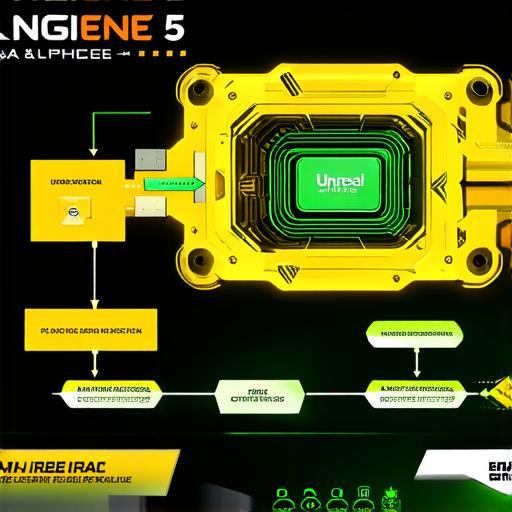The Blueprint Pattern
The blueprint pattern is one of the most popular game development patterns in Unreal Engine. It allows developers to create interactive objects and characters without writing any code. Instead, developers use a visual interface called blueprints to define the behavior of their objects. Blueprints are easy to use and can be edited and shared between team members, making it an ideal solution for rapid prototyping.
One of the key benefits of the blueprint pattern is that it allows developers to focus on game design rather than coding. This can help speed up development time and reduce the risk of errors. For example, if a developer wants to create a character that can walk and run, they can use a blueprint to define its movement patterns without having to write any code.
Another advantage of the blueprint pattern is that it allows developers to quickly iterate on their designs. If a developer realizes that their character’s movement patterns are not working as expected, they can easily make changes to the blueprint and test their changes in real-time.
The MVC Pattern
The Model-View-Controller (MVC) pattern is a common programming pattern used in game development. It separates an application into three main components: the model, the view, and the controller. The model represents the data and business logic of the application, while the view displays the user interface. The controller handles user input and updates the model and view accordingly.
In Unreal Engine, the MVC pattern is used to manage game state and update the user interface in real-time. For example, if a player interacts with an object in the game world, the controller sends a message to the model to update the object’s state. The model then updates the view to reflect the changes.
One of the benefits of using the MVC pattern in Unreal Engine is that it allows developers to easily modify and extend the game without affecting other parts of the codebase. For example, if a developer wants to add a new character to the game, they can create a new model and controller for the character without having to modify the existing code.
The Observer Pattern
The observer pattern is a behavioral design pattern that allows objects to notify each other when their state changes. In Unreal Engine, the observer pattern is used to update the user interface in response to changes in game state.
For example, if a player character takes damage, the controller sends a message to the model to update the character’s health. The model then sends a message to all connected views to update their health bars. This allows the views to display the correct health values in real-time.
One of the benefits of using the observer pattern in Unreal Engine is that it allows developers to decouple the user interface from the game logic. This makes it easier to modify and extend the user interface without affecting the game’s behavior.
The Factory Pattern
The factory pattern is a creational design pattern that provides an interface for creating objects in a superclass, but allows subclasses to determine which class to instantiate. In Unreal Engine, the factory pattern is used to create game objects and manage their lifetimes.
For example, if a developer wants to create a new character in the game, they can use the factory pattern to create an instance of the character’s model and controller classes. The factory pattern ensures that the correct classes are instantiated and managed appropriately, reducing the risk of errors and improving performance.
One of the benefits of using the factory pattern in Unreal Engine is that it allows developers to easily manage the lifetimes of game objects. For example, if a developer wants to destroy a character when it takes damage, they can use the factory pattern to create an instance of the character’s model and controller classes and manage their lifetimes appropriately.
The Singleton Pattern
The singleton pattern is a creational design pattern that ensures a class has only one instance and provides a global point of access to it. In Unreal Engine, the singleton pattern is used to manage game state and provide a centralized point of control for various game systems.
For example, if a developer wants to manage the game’s sound effects, they can use the singleton pattern to create an instance of the sound manager class and provide a global point of access to it. This allows all parts of the game to play sounds and music without having to instantiate multiple instances of the sound manager class.
One of the benefits of using the singleton pattern in Unreal Engine is that it allows developers to manage global resources efficiently. For example, if a developer wants to manage the game’s textures, they can use the singleton pattern to create an instance of the texture manager class and provide a global point of access to it. This allows all parts of the game to access textures without having to instantiate multiple instances of the texture manager class.
Conclusion
In conclusion, mastering game development patterns is essential for any Unreal Engine developer who wants to create successful games. The blueprint pattern, the MVC pattern, the observer pattern, the factory pattern, and the singleton pattern are some of the most important game development patterns that every Unreal Engine developer should know.

